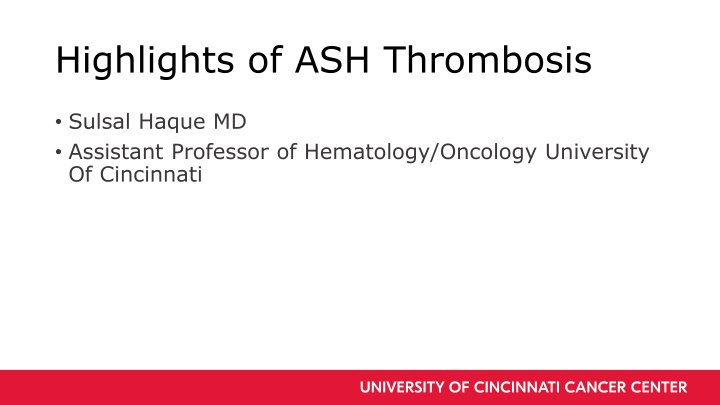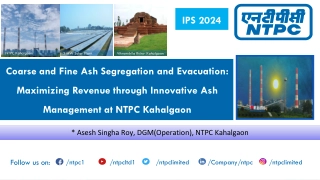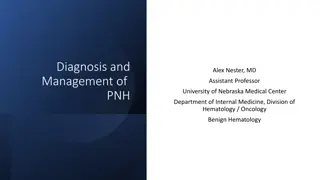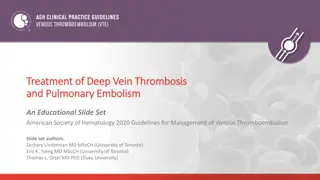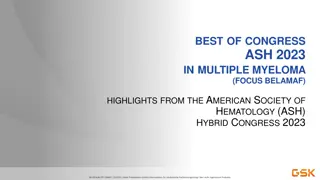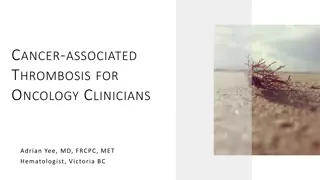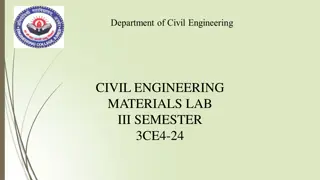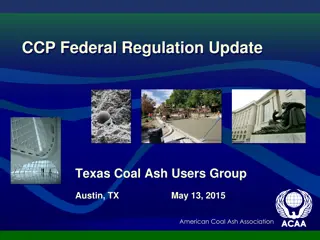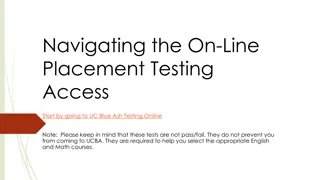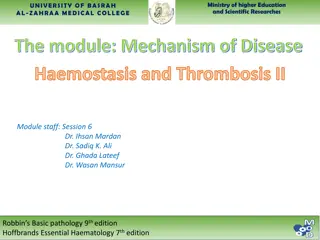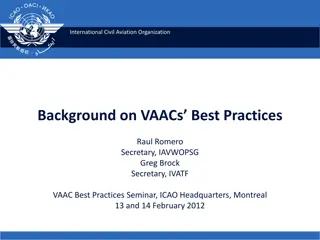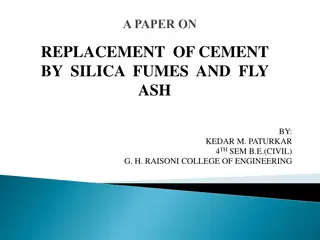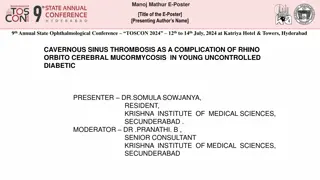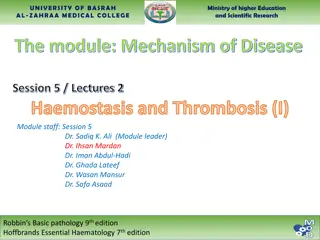Highlights of ASH Thrombosis Study Findings
ASH Thrombosis study findings on rivaroxaban vs. apixaban for Cancer Associated Thrombosis (CAT). Includes retrospective analysis, patient demographics, and conclusions on efficacy and safety of DOACs. Also discusses thrombocytopenia and bleeding risks in CAT using Hokusai VTE Study data.
Uploaded on May 01, 2025 | 1 Views
Download Presentation

Please find below an Image/Link to download the presentation.
The content on the website is provided AS IS for your information and personal use only. It may not be sold, licensed, or shared on other websites without obtaining consent from the author.If you encounter any issues during the download, it is possible that the publisher has removed the file from their server.
You are allowed to download the files provided on this website for personal or commercial use, subject to the condition that they are used lawfully. All files are the property of their respective owners.
The content on the website is provided AS IS for your information and personal use only. It may not be sold, licensed, or shared on other websites without obtaining consent from the author.
E N D
Presentation Transcript
Highlights of ASH Thrombosis Sulsal Haque MD Assistant Professor of Hematology/Oncology University Of Cincinnati
Study 1:Rivaroxaban vs. Apixaban for Cancer Associated Thrombosis (CAT)
Rivaroxaban vs. Apixaban for Cancer Associated Thrombosis (CAT) Retrospective study using US Optum De-Identified data from 01/2013 12/20 comparing DOACs for CAT Included those with active malignancies for which DOACs endorsed as alternative to LMWH AND developed VTE and treated with rivaroxaban or apixaban. Study powered to assess first recurrent VTE or any critical organ bleeding @ 3 and 6 months. Study was designed to demonstrate non-inferiority.
Rivaroxaban vs. Apixaban for Cancer Associated Thrombosis (CAT) 2437 patients were identified (1344 apixaban 1093 rivaroxaban). 29% > 75, 57% female, 21% had BMI > 35, 19% GFR< 60. CAT event was DVT +/- PE in 45.6%, 38% had metastatic disease and 58% received active tx within 4 weeks. Most common cancer types were breast, lung, prostate and HPB cancers.
Rivaroxaban vs. Apixaban for Cancer Associated Thrombosis (CAT) Upper limit of 95% CI for non-inferiority of 1.50 was used as definition (used in HOKUSAI VTE Trial). At 3 months rivaroxaban was as effective and safe as apixaban for recurrent VTE or bleeding related hospitalization (5.3% vs. 6% HR=0.87 95% CI 0.67-1.27) At 6 months no difference was noted. Conclusions: Rivaroxaban appears to be at least as effective and safe as apixaban @ 3 and 6 months.
Study 2:Thrombocytopenia and Bleeding risk in CAT using Hokusai VTE Study
Thrombocytopenia and Bleeding risk in CAT using Hokusai VTE Study Thrombosis and thrombocytopenia frequent complications in patients with active cancer and can complicate anticoagulation decisions. Limited data to guide clinicians. Post-hoc analysis done on HOKUSAI VTE Cancer study. HOKUSAI VTE Cancer Study was an open-label non- inferiority Ph3 trial comparing dalteparin vs. edoxaban treatment for @ least 6 months.
Thrombocytopenia and Bleeding risk in CAT using Hokusai VTE Study Patients with platelet counts < 100,000 at specified time points (day of enrollment, day 31 or 90) were compared to those with > 100,000. Primary outcomes were major bleeding events. Clinically relevant non-major bleeding (CRNMB), recurrent thrombosis and survival were secondary outcomes.
Thrombocytopenia and Bleeding and risk in CAT using Hokusai Study 1045 patients included. Median age 65 & 52% male 9.6% of patients had platelet count < 100k. 14 had < 50K. Major bleeding rates for platelet < 100K were higher 11.9% vs. 4.8% for platelet > 100K. CRNMB were also higher 22% vs. 12%. No major difference in recurrent thrombosis or death. Major bleeding remained higher @ 180 days 8.9% in platelet < 100K vs. 4% in platelet > 100K.
Study 3:OctaPlex vs. Kcentra for Warfarin Reversal for Urgent Surgery
OctaPlex vs. Kcentra for Warfarin Reversal for Urgent Surgery 4-factor PCCs effective in urgent reversal of VKA OAC. LEX-209 non-inferiority RCT comparing investigational 4F-PCC (Octaplex) vs. control (Kcentra). Patients > 18 yo on VKA tx, hospitalized for urgent surgery and had INR > 2 and received a single IV 4F-PCC dose according to baseline INR. Primary endpoint was hemostatic efficacy rating at surgery. Primary hypothesis was that Ocatplex was NI to Kcentra.
OctaPlex vs. Kcentra for Warfarin Reversal for Urgent Surgery Conducted at 24 sites in US and Europe from 2017 - 2021. 105 patients recruited to each arm. Baseline characteristics were similar. 94% of patients achieved hemostasis in both groups. 78% of patients had INR < 1.5 in investigational arm vs. 72% in control arm. No surgeries were cancelled due to inadequate INR correction.
OctaPlex vs. Kcentra for Warfarin Reversal for Urgent Surgery Treatment emergent adverse effects were similar in both groups (82 vs. 78%). Most common adverse reactions in investigational agents was anemia, asthenia and catheter related infection. Study found that investigational 4F-PCC was NI to control 4F-PCC for VKA reversal with similar safety profiles.
Study 4:ALIFE2 LMWH vs. SOC with recurrent miscarriage and Inherited Thrombophilia Phase 3 RCT
ALIFE2 Studies show that inherited thrombophilia associated with recurrent miscarriage. Anticoagulation might reduce # of miscarriages and adverse pregnancy outcomes but no RCT to confirm this. RCT conducted comparing LMWH vs. standard surveillance in women with recurrent miscarriage and inherited thrombophilia. Primary outcomes was live birth rate.
ALIFE2 ALIFE2 was international RCT conducted across Europe and US. 2 or more pregnancy loss and inherited thrombophilia (FVL, prothrombin 20210A mutation, antithrombin, protein C or protein S deficiency) and had to be actively trying to conceive or < 7 weeks pregnant. Randomized to LMWH (enoxaparin 40 mg, dalteparin 5,000 IU, tinzaparin 4,500 IU or nadroparin 3,800 IU) versus standard pregnancy surveillance. LMWH was started 7 weeks of pregnancy and continued until the end of pregnancy.
ALIFE2 428 women registered, and 326 women conceived and were randomized to LMWH (n=164) or surveillance (n=162). 70% had history of 3 or miscarriages. FVL (56%), prothrombin 20210A mutation (25%), and protein S deficiency (14%). Aspirin was used as co medication in 11%. Observed live birth rates were 116/162 (71.6%) in the LMWH group and 112/158 (70.9%) in SOC group (adjusted OR 1.08 (95% CI 0.65 to 1.78)(absolute difference 0.7% (95% CI -9.2% to 10.6%).
ALIFE2 Compared with standard surveillance LMWH did not result in higher live birth rates in women with 2 or more pregnancy losses and confirmed inherited thrombophilia. Study recommends against using LMWH in these settings.
